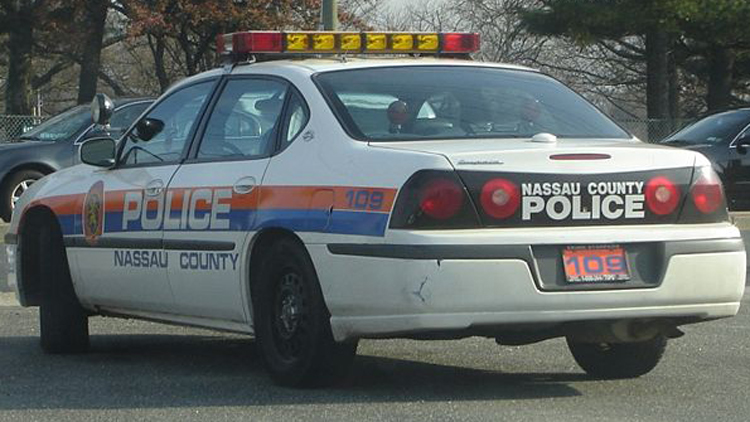Use of body cameras, more police officer training, a mentorship program to increase diversity in the ranks, and an emphasis on transparency are all part of Nassau County Police Department’s newly unveiled proposed police reforms.
Nassau Police Commissioner Patrick Ryder outlined the draft list of reforms during a public hearing held by the Nassau County Legislature’s Public Safety committee on Thursday. Some advocates criticized the process in which police gathered public comments on the proposed reforms. The reforms are among those that Gov. Andrew Cuomo mandated police departments statewide undertake in response to nationwide protests against police brutality.
“The communities that put their trust in law enforcement are asking for change and reform,” Ryder said. “We are listening, and we can always do better for our communities.”
Ryder reviewed the draft of procedural changes and programs, which must be approved by the county legislature and filed to the state by Nassau County Executive Laura Curran by April 1. Cuomo instated the order in June 2020 after the Minneapolis police killing of George Floyd in May 2020 and nationwide protests that followed.
Advocates across Long Island have since been demanding increased accountability for police officers and an end to systemic and implicit racial bias in policing. Others have also called for diverting funding from police departments to social services that prevent crime.
To address these concerns, Nassau police has suggested a new, annual 10-hour training for officers covering intervention techniques, ethical and moral standards, bias, the law, and other relevant topics. Officers would then take a one-hour online test to certify that they understand bias and other important issues.
Nassau police has also proposed a mentoring program for individuals, especially young people of color, who want to join the force, in hopes of increasing diversity. It would be implemented in partnership with community organizations to help people overcome barriers to applying to become an officer.
“We don’t want to lose any good officer who should be on this police department,” Ryder said. “We’re working on that. That’s going to take time.”
Another significant change would be the bi-annual reporting of police data. The department has an anonymous complaints system, which would now accept photo and video supplements. That information will be released every six months in compliance with new transparency laws. The department will also collect traffic stop data, including the race of individuals stopped, and release the report every six months.
In addition, Ryder said that the department would implement body cameras by the fall of this year, despite pushback from police unions.
The preliminary plan was made in cooperation with the Police And Community Trust group (PACT) and Collaborative Task Force (CCT), as well as 132 community meetings since last summer, Ryder said. However, when it came time for public comment, several advocates claimed they did not have meaningful participation in the process.
“The process involving PACT and CCT has been flawed,” said Frederick Brewington, who said he represents Long Island Advocates For Police Accountability (LIAFPA).
“It was not written together, it was not written with the community,” Susan Goetherrer, also of LIAFPA and director of Nassau’s New York Civil Liberties Union, echoed, adding that legislative action needs to occur, not just internal procedure changes.
Shanequa Levin, an advocate representing LI United to Transform Policing & Community Safety, said that the coalition of dozens of organizations has drafted their own “people’s plan” for the police department, which would be available at the beginning of February.
“This is not just about, ‘Oh, how do we improve a system?’” she said. “This is about my life. This is about my people’s life. This is about my brother’s life, my son’s life, my husband’s life. This is real stuff that we encounter on a daily basis.”
Michael Stein, a retired New York City police officer, expressed concerns about the use of body cameras, suggesting they are costly and do not bring significant change. “It didn’t transform policing [in other cities],” he said. “It just put the people making complaints in the hot seat more and more often.”
Lawmakers then gave their thoughts on the drafted reforms, including Nassau Legislator Steve Rhoads (R-Bellmore), who is chair of the minority affairs committee. He said he’d expressed concerns about inclusive involvement in PACT and requested more formal reports on PACT meetings from Curran in July, but did not receive them.
“It seems we’ve been missing some important segments of the community in coming up with the draft proposal,” he said.
Ryder said that having the draft document go public “opens it up” for all residents to make suggestions.
In a statement, Curran agreed, and called on all residents to provide input to “improve public safety and reinforce trust between police and the community.”
“As we work towards a final plan, my administration will remain guided by a balanced, transparent, and inclusive approach,” she said.
For more information about Nassau County Police Department procedures and to view the draft of reforms, visit nassaucountyny.gov/eo203.
Related Story: Nassau Committee Will Study Police Response to Mental Health Crises
Related Story: Suffolk Panel To Devise Police Reform Plan
Related Story: Racial Justice Marches Spark Police Reforms on Long Island



































